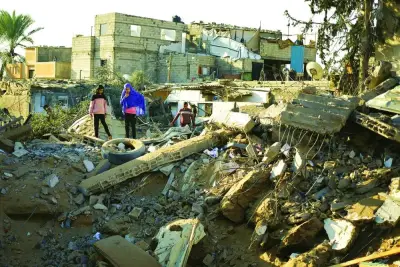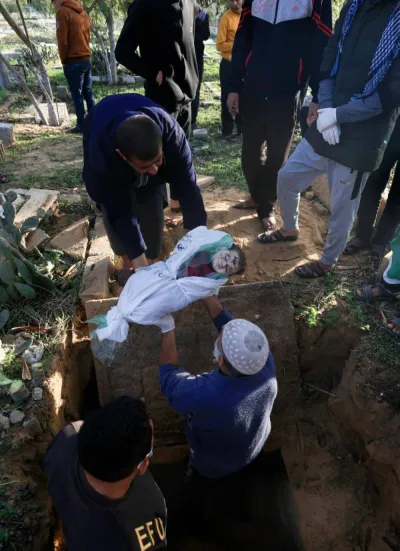The Humanitarian Coordinator for the Occupied Palestinian Territory Lynn Hastings warned of the deteriorating situation in the Gaza Strip.
“The conditions required to deliver aid to the people of Gaza do not exist. If possible, an even more hellish scenario is about to unfold, one in which humanitarian operations may not be able to respond,” Hastings said in a statement.
“What we see today are shelters with no capacity, a health system on its knees, a lack of clean drinking water, no proper sanitation and poor nutrition,” she said, adding that this is “a textbook formula for epidemics and a public health disaster.”
Since the resumption of hostilities in Gaza on Dec. 1, 700 Palestinians have reportedly been killed, and that the Israeli military operations have expanded into southern Gaza, forcing tens of thousands of Palestinians into increasingly compressed spaces, desperate to find food, water, shelter and safety, she noted.
“Nowhere is safe in Gaza and there is nowhere left to go,” Hastings said.
The quantities of relief supplies and fuel allowed in are utterly insufficient, she said, adding that Despite the enormous efforts of the Egyptian and Palestinian Red Crescent Societies, UN agencies and other partners, the use of only the Rafah crossing to bring in trucks of goods does not work.
Humanitarian operations cannot be kept on a drip feed of fuel. It is the foundation of social services and our operations; including for hospitals, desalination plants, clean drinking water and sanitation,” the Humanitarian Coordinator for the Occupied Palestinian Territory stressed.
“Space for the humanitarian response allowed inside Gaza is constantly shrinking. The two most important routes the coastal road and Salahaddin road are now cut off to our teams and trucks, hindering our ability to help people wherever they are,” she added.
“The conditions required to deliver aid to the people of Gaza do not exist. If possible, an even more hellish scenario is about to unfold, one in which humanitarian operations may not be able to respond,” Hastings said in a statement.
“What we see today are shelters with no capacity, a health system on its knees, a lack of clean drinking water, no proper sanitation and poor nutrition,” she said, adding that this is “a textbook formula for epidemics and a public health disaster.”
Since the resumption of hostilities in Gaza on Dec. 1, 700 Palestinians have reportedly been killed, and that the Israeli military operations have expanded into southern Gaza, forcing tens of thousands of Palestinians into increasingly compressed spaces, desperate to find food, water, shelter and safety, she noted.
“Nowhere is safe in Gaza and there is nowhere left to go,” Hastings said.
The quantities of relief supplies and fuel allowed in are utterly insufficient, she said, adding that Despite the enormous efforts of the Egyptian and Palestinian Red Crescent Societies, UN agencies and other partners, the use of only the Rafah crossing to bring in trucks of goods does not work.
Humanitarian operations cannot be kept on a drip feed of fuel. It is the foundation of social services and our operations; including for hospitals, desalination plants, clean drinking water and sanitation,” the Humanitarian Coordinator for the Occupied Palestinian Territory stressed.
“Space for the humanitarian response allowed inside Gaza is constantly shrinking. The two most important routes the coastal road and Salahaddin road are now cut off to our teams and trucks, hindering our ability to help people wherever they are,” she added.
Source link
 Kokani.me Kokani.me
Kokani.me Kokani.me



